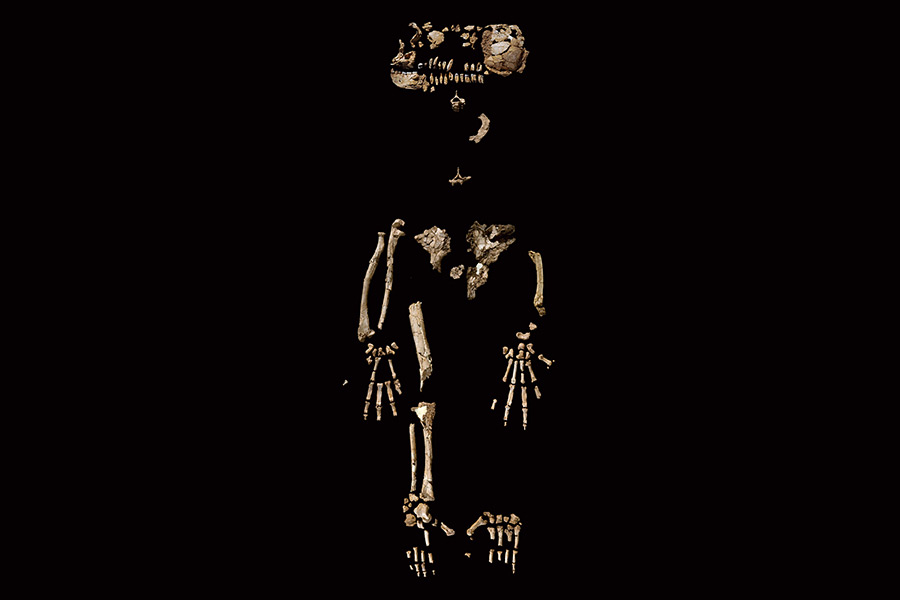Based on genetic evidence, the hominin lineage split from the chimpanzee lineage between 8.0 and 7.0 million years ago. Current fossil evidence indicates the presence of three hominin species between 7.0 and 5.0 million years ago. These are Sahelanthropus tchadensis (7.0–6.0 million years ago), Orrorin tuenensis (6.1–5.8 million years ago), and Ardipithecus kadabba (6.2–5.2 million years ago).

Ardipithecus ramidus fossil skeleton.
Image credit https://www.science.org/doi/10.1126/science.1175802
These species are mostly known from only a single, or sometimes a handful, of fossils, and their detailed morphology and behavior is poorly understood. However, preserved skeletal elements of these species indicate the presence of some form of bipedal adaptation. For example, the forward or anterior position of the foramen magnum (the hole under the head where the spinal column attaches) in S. tchadensis, morphology of the thigh bone of O. tugenensis, and a toe bone of Ar. kadabba, were used to infer bipedality in these species. Their teeth, including the canines were generally small and did not show substantial size differences between males and females.
Despite the diverse habitats present during their existence, various lines of evidence suggest that they preferred wooded habitats and most likely consumed softer food items. Moreover, they were likely adept arboreal or tree climbers and predominantly exploited arboreal resources. Hominin fossils between 5.2 and 4.5 million years ago are currently lacking, and the course of hominin evolution during this time period is unknown.
However, Ardipithecus ramidus appears in the fossil record about 4.5 million years ago. Currently, most of what we know about the earliest hominins is based on the anatomy and adaptive strategies of this species. Ardipithecus ramidus was a facultative biped and retained an opposable big toe. However, like its predecessors, its teeth were small with minimal size variation between males and females. Its preferred habitat was also more closed and woodland habitats. The relatively thinner enamel on its teeth also suggests that it consumed softer food items.
Ardipiths gave way to australopiths as a result of continued diminishing of forests and woodland habitats and expansion of more open grasslands, which required an entirely different adaptive strategy.